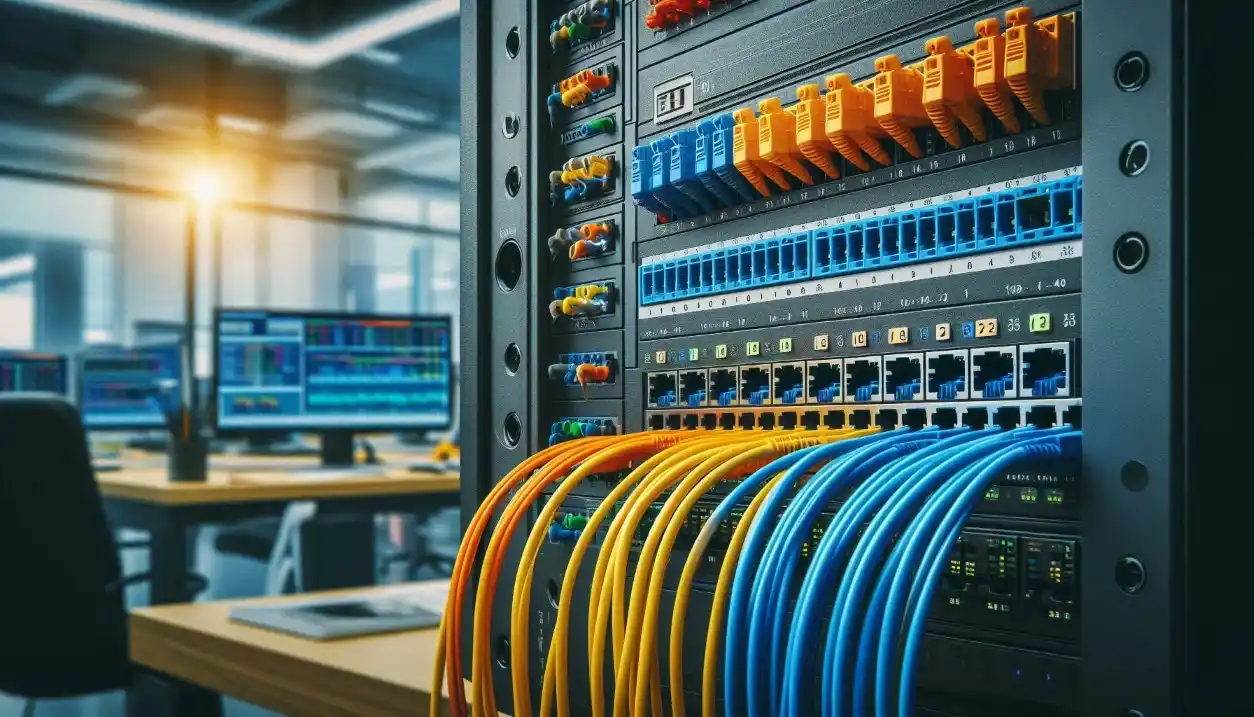
Ultra Fast, Full Fibre Broadband in the UK - June 2025!
Hey there, welcome to a wonderful Thursday! If you’re tired of buffering videos and slow-loading websites, you’ve clicked on the right piece of content. Let’s talk about Thursday's fast fibre internet deals in the UK and how it can revolutionise your online experience. Whether you’re binge-watching your favourite series, working from home, gaming with friends, or just scrolling through social media, fast fibre internet is the game-changer you didn’t know you needed!
LATEST FULL FIBRE BROADBAND DEALS - 26/06/2025What’s the Deal with Full Fibre Broadband in June 2025?
First thing's first: what exactly is full fibre broadband? In simple terms, full fibre broadband or fibre-optic internet uses light signals to transmit data. This means it can send information across long distances at incredibly high speeds. Compared to the good old copper wire connections, fibre optics are like a race car on a highway while copper is more like a tricycle on a gravel path. Needing speed? Fibre’s got it!
Different Types of Internet Connections
So, you might be wondering about the different types of internet connections out there. Let’s break it down a bit:
- ADSL (Asymmetric Digital Subscriber Line): This is what many households have been using for ages, and while it’s decent, it simply can’t match up to fibre speeds.
- Cable Broadband: Faster than ADSL in some cases but still lags behind fibre in terms of speed and reliability.
- Fibre to the Cabinet (FTTC): This is when the fibre optic cables reach the street cabinet, but then it switches back to copper wires to your home. Speedy? Yes, but not as great as full fibre.
- Full Fibre (FTTP): This is the gold standard: fibre optics all the way to your home. Think of it as getting a direct line to the internet superhighway!

Why Choose Fast Fibre Internet?
Lightning-Fast Speeds
Let’s be real: nobody wants to sit and watch that pesky loading circle while waiting for their show to start. Fast fibre internet can offer speeds of up to 1 Gbps (that’s gigabit per second, in case you were wondering). You can easily stream in 4K, download movies in seconds, and simultaneously run multiple devices without breaking a sweat. It’s like having your cake and eating it too!
Reliability You Can Count On
With fibre, you’re not just buying speed; you’re buying peace of mind. Fibre networks are less susceptible to interference, meaning your connection is far more reliable, even during peak hours. If you’ve ever experienced the wrath of a slow connection during a virtual meeting, you know exactly what I mean!
Better for Multiple Users
Family members fighting over bandwidth? Yeah, that’s a classic struggle. Fast fibre internet can handle multiple devices streaming, gaming, and browsing at the same time without sacrificing performance. Whether your kids are streaming cartoons, your partner's gaming, or you're attempting to work from home, everyone can enjoy high-speed access without a hitch.
Get Your Game On!
For all the gamers out there, fast fibre internet is a must-have. No one wants to be that gamer lagging behind while others zoom past. With low latency and high speeds, you can level up your gaming experience like a pro!
Future-Proof Your Home
As technology advances, the need for higher speeds becomes inevitable. Having fast fibre internet prepares you for the unforeseen future. It’s like investing in your home’s internet for years to come!
Popular Providers of Fast Fibre Internet in the UK
Curious who’s offering these impressive fibre internet packages? Let’s take a look at some of the UK’s top providers:
1. BT (British Telecommunications)
Boasting a strong reputation and extensive coverage, BT offers various fibre packages, including their ultrafast options. With competitive prices and fibre-to-the-premises (FTTP) options available in many areas, they are worth considering.
2. Virgin Media
With the fastest widely available broadband in the UK, Virgin Media is a solid choice. They provide a range of packages that cater to different household needs. And if you’re after ultra-fast speeds, they’ve got your back!
3. Sky
Another familiar name, Sky, offers a mix of broadband and TV bundles, making it easier for you to stay entertained. Their fibre deals are known for being reliable and user-friendly.
4. TalkTalk
TalkTalk has been making waves recently with their competitive pricing. They offer a range of fibre packages with a focus on flexibility and value for money.
5. Hyperoptic
If you’re in a city centre, you may want to check out Hyperoptic. They’ve been expanding rapidly, providing pure fibre connections that boast lightning-fast speeds. Perfect for those who are always online!
How to Choose the Right Fibre Internet Package
Alright, so you’re sold on fibre internet! Now, how do you choose the right package? Here are a few things to keep in mind:
1. Speed Needs
Analyzing your internet habits is important. If you’re a casual user who only browses and streams occasionally, you might not need the top-tier package. However, if you have a large family or work from home with heavy uploads and downloads, go for higher speeds.
2. Budget
It’s essential to compare prices from different providers. Some may have enticing introductory offers, but be wary of potential price hikes after the first year. Always read the fine print!
3. Contract Length
Do you want to commit long-term, or are you looking for flexibility? Different providers offer various contract lengths, so pick one that suits your lifestyle.
4. Customer Service Reviews
We’ve all heard the horror stories of bad customer service. Check out reviews and testimonials before you dive in; you don’t want to get stuck with poor support when things go wrong.
5. Installation and Equipment
Some providers charge for the installation and necessary equipment like routers. Make sure to factor these costs into your budget for a more accurate picture.

The Rise of UK Full Fibre Broadband in June 2025
In recent years, the UK has witnessed a surge in the availability and adoption of fibre broadband. The transition from traditional copper-based connections to Fibre-optic technology has transformed the way individuals and businesses access the internet. With fibre broadband, users can experience several advantages over legacy systems, including:
-
Higher Speeds: Fibre-optic connections offer significantly higher download and upload speeds, making streaming, online gaming, and large file transfers seamless.
-
Improved Stability: Fibre is less susceptible to interference from environmental factors, providing a more stable connection.
-
Future-Proofing: As bandwidth demands increase with advanced technologies and smart devices, fibre broadband can support higher data rates compared to its predecessors.
According to Ofcom, over 67% of UK households now have access to fibre broadband, representing a remarkable growth trajectory. This move towards fast fibre broadband is not just about convenience; it is also essential for the UK economy's competitiveness.
"The future of our economy depends on our ability to innovate and connect. Fast internet isn't just a luxury; it is a necessity." – Digital Minister, Matt Warman
Current Landscape of Fast, Full Fibre Broadband in June 2025
Major Providers
Several providers spearhead the fibre broadband market in the UK, each offering unique services and competitive pricing:
-
BT: One of the oldest telecommunications companies in the UK, offering extensive fibre coverage.
-
Virgin Media: A leading provider known for its high-speed fibre offerings, boasting some of the fastest speeds available.
-
Sky: Provides fibre broadband as part of bundled packages with television and mobile services.
-
TalkTalk: Focused on affordability while also expanding its fibre offerings.
-
CityFibre: An emerging player specializing in full-fibre networks across various cities.
Challenge of Achieving Universal Access
While significant strides have been made in fibre broadband deployment, challenges remain, particularly in rural areas where connectivity is limited. The UK government has committed to achieving universal broadband access by 2025, but several hurdles exist:
-
Infrastructure Costs: Building the necessary infrastructure in underserved areas can be prohibitively expensive for providers.
-
Geographic Barriers: Remote locations and challenging terrains hinder the deployment of fibre networks.
-
Market Competition: In some regions, limited providers can lead to higher prices and fewer choices for consumers.
To address these issues, the UK government has introduced initiatives such as the Broadband Universal Service Obligation (USO) and funding programs aimed at incentivizing investment in rural broadband infrastructure.
UK Government Initiatives
-
Broadband USO: Ensures that everyone has the right to request a decent and affordable broadband connection.
-
Project Gigabit: Aiming to provide gigabit-capable broadband to at least 85% of the UK by 2025.
-
Rural Broadband Schemes: Financial assistance for providers to expand coverage in less populated areas.
Benefits of Fast Fibre Broadband
The integration of fibre broadband into everyday life has transformed various sectors, leading to several benefits:
-
Economic Growth: Enhanced connectivity encourages businesses to innovate and expand their digital capabilities.
-
Remote Work Capabilities: With the rise of telecommuting, fast internet is vital for professionals to maintain productivity from home.
-
Education: Access to online resources and virtual classrooms has become essential for students and educators, requiring robust internet connections.
-
Entertainment: Streaming services and online gaming are increasingly popular, all of which demand High-speed internet.
Moreover, as businesses evolve and technology advances, the demand for faster and more reliable internet connections will only grow.
Potential Drawbacks
While fibre broadband presents numerous advantages, there are possible drawbacks to consider:
-
Installation Costs: Initial costs for installing fibre connections can be high, potentially leading to increased customer fees.
-
Service Limitations: Not all areas, particularly rural regions, have equal access to fibre broadband, creating a digital divide.
-
Dependence on Technology: Increased reliance on digital infrastructure can lead to vulnerabilities, including cybersecurity threats.
Conclusion
The rapid expansion of fibre broadband in the UK marks a significant shift toward improved connectivity and overall digital experience. While challenges remain, particularly in rural areas, ongoing government initiatives and private sector investments aim to bridge the digital divide.
Individuals and businesses can enhance their digital capabilities through fast fibre broadband, resulting in economic growth, improved education, and enriched personal experiences. The journey towards universal, High-speed internet continues, and the future looks promising for fibre broadband in the UK.
Frequently Asked Questions (FAQs)
1. What is the difference between FTTC and FTTP?
FTTC (Fibre to the Cabinet) uses a combination of fibre and copper connections, while FTTP (Fibre to the Premises) uses fibre entirely from the provider to the customer's location.
2. How fast is fibre broadband?
Speeds vary based on the service type but can range from 30 Mbps to over 1 Gbps for FTTP connections.
3. Are there any government programs supporting fibre broadband installation?
Yes, the Broadband USO and Project Gigabit are key initiatives designed to improve access to fast broadband, especially in underserved areas.
4. Can I get fibre broadband in rural areas?
Access to fibre broadband in rural areas is improving, but availability may vary by region. It's best to check with local providers for options.
5. Is fibre broadband worth the investment?
For most users, the benefits of faster speeds and improved reliability make fibre broadband a worthwhile investment, particularly for businesses and heavy internet users.
Thursday's Fast Fibre Internet Deals in the UK >>
London Fast Fibre Internet | Birmingham Fast Fibre Internet | Manchester Fast Fibre Internet | Glasgow Fast Fibre Internet | Edinburgh Fast Fibre Internet | Cheshire Fast Fibre Internet | Devon Fast Fibre Internet | Hampshire Fast Fibre Internet | Lancashire Fast Fibre Internet | Lincolnshire Fast Fibre Internet | Yorkshire Fast Fibre Internet